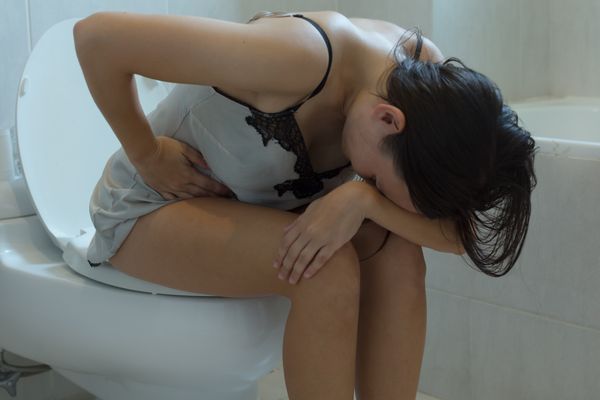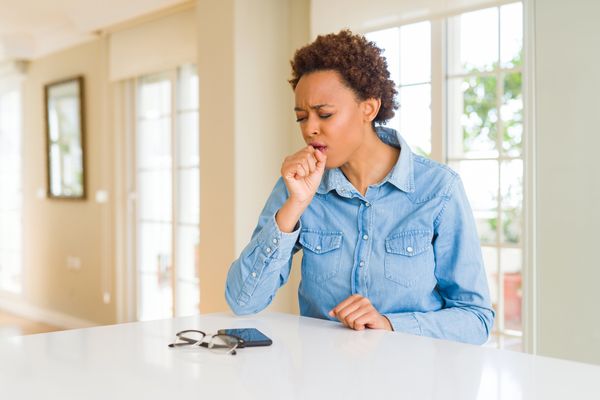It's horrifying to think about, but your insides can sometimes bulge out through your vaginal opening. It's called vaginal prolapse. And, although many women find it alarming and embarrassing, it's more common than you probably think.
More than one-third of U.S. women have some type of vaginal prolapse at some point in their lives. The condition may cause pain, constipation, incontinence and difficulty with sex — but breathe easy. There are treatment options that can help.
We reached out to Rashmi Kudesia, M.D., an endocrinologist and infertility specialist at Houston Methodist Hospital and a member of HealthyWomen's Women's Health Advisory Council, to learn more.
What is vaginal prolapse?
Vaginal prolapse, also known as pelvic organ prolapse (POP), is when one or more parts of the vagina and/or uterus move downward as a result of weakening pelvic floor muscles, which are responsible for keeping the pelvic organs lifted. This drop can be permanent or come and go with increased abdominal pressure caused by coughing, sneezing, laughing — or even gravity.
Are there different types of vaginal prolapse?
Yes. Since there are different parts of the vagina and uterus that can fall, there can be different types of POP:
- Cystocele — weakness in the front wall of the vagina, which allows the bladder to fall into the vagina
- Rectocele — weakness in the back wall of the vagina, which allows the rectum to fall into the vagina
- Enterocele — weakness in the top of the vagina, which allows the small bowel to fall into the vagina
- Uterine prolapse — when the uterus and cervix drop from the top of the vagina toward the vaginal opening or even through and outside the vaginal opening
- Vaginal vault (or vaginal cuff) prolapse — when the top of the vagina (after a hysterectomy) falls into the bottom of the vagina or completely outside of the opening of the vagina
How common is vaginal prolapse?
Studies show that less than 10% of women report symptoms. But if we look at what doctors actually see during exams that check for POP, the number seems to be closer to half of women, especially older women. Women are most likely to experience POP in their 70s, and about 10%-15% of women in the United States undergo surgery for the condition, according to the American College of Obstetricians and Gynecologists.
What are the symptoms of vaginal prolapse?
Symptoms depend on which parts of the pelvic floor are prolapsed. You may just experience the feeling that something is falling out of the vagina or a sense of pressure in the pelvic area, both of which can lead to pain during sex. Prolapse of the front wall of the vagina can cause urinary symptoms, such as incontinence, while prolapse of the back wall can cause bowel symptoms, such as difficulty emptying or constipation.
What are the causes or risk factors of vaginal prolapse?
- Prior pregnancy — This is the primary risk factor, with the risk becoming greater with each pregnancy. This is true even if delivery was via Cesarean section, though vaginal deliveries can further increase the risk, especially if forceps were used
- Age — risk increases as women age and go through menopause
- Obesity or being overweight
- Existing connective tissue disease
- Chronic constipation
- Surgery — procedures like a hysterectomy or radiation treatment in the pelvic area
- Extreme physical activity or heavy lifting — strain from these activities can weaken your pelvic muscles
- Genetic or hereditary factors — a weaker pelvic support system can be hereditary
How is vaginal prolapse diagnosed?
POP can be diagnosed either by symptoms reported by a patient or by a thorough pelvic exam. In an exam, you might be asked to bear down or cough to recreate the impact of increased abdominal pressure. The most detailed exam is the pelvic organ prolapse quantification (POP-Q) examination, which measures the visible pelvic structures in detail to measure prolapse.
How is vaginal prolapse treated?
Sometimes lifestyle can help with symptoms, particularly treating chronic constipation or losing weight. Sitting with your feet elevated and avoiding long periods of standing can help combat the impact of gravity. Pelvic floor exercises, particularly under the supervision of a pelvic floor physical therapist, can also help. Hormone therapy for postmenopausal women may also help with some symptoms. Using a pessary, which is a device placed inside the vagina to help lift the pelvic organs, can assist with improving symptoms. This must be fitted properly by a physician to ensure the right size and shape for the particular type of POP you have. Finally, surgery may be appropriate in some situations. Be sure to ask your healthcare provider which options might be best for you.
Is there a possibility of recurrence after treatment?
Even after surgery, some women may have a recurrence or even require another operation, but this does not occur often.
Can vaginal prolapse be prevented?
POP is not entirely preventable, but doing pelvic floor exercises, such as kegels; staying at a healthy weight; and eating a diet with sufficient fiber to avoid straining for bowel movements can all help lower your risk.
Do certain types of exercise cause vaginal prolapse?
Exercise, with a mix of cardio and weightlifting, is good for overall health, although the sudden jerky movements made during weightlifting can cause POP symptoms. But with appropriate training, even with the condition, you can and should exercise regularly. Low impact exercises that make it easier for you to use your pelvic floor muscles are a good choice because they help you avoid putting undue stress on the pelvic organs. It's a good idea to work with a healthcare provider to understand exactly how to do pelvic floor exercises and engage the pelvic floor.
Does having vaginal prolapse lead to other medical conditions or complications?
When you have POP, it might hurt to have sex or cause some decreased sexual satisfaction as a result of being self-conscious. You may also have difficulty emptying your bladder or experience incontinence of the bladder or bowels.
- Prelvic Organ Prolapse: Symptoms and Treatment - HealthyWomen ›
- How to Strengthen Your Pelvic Floor Without Kegels - HealthyWomen ›
- Prolapse Changed My Life - HealthyWomen ›
- Facts About the Pelvic Floor - HealthyWomen ›
- Pelvic Floor Therapy - HealthyWomen ›







